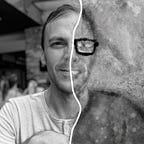Is the Birthday Paradox real?
The birthday paradox goes as follows:
In a room of just 23 people there is a 50:50 chance that at least two of them share a birthday.
Why is this a paradox? Well, there is a 1/365 chance of another person having the same birthday as you. I don’t know anyone who shares my birthday. (Besides my twin, of course!) Since I’ve met far more than 23 people, how can this be true?
This reasoning is flawed for several reasons, the first of which is that the question wasn’t asking about if there was another person in the room with a specific birthday — any pair of people (or more!) can share a birthday to increase the chances of the statement being true.
The complete answer involves a lot of math, but I want to show you how to convince yourself it is true by simulating the experiment.
Simulation is programming a computer or model to act as if the real thing were happening. Usually, you set this up so that the cost of simulation is much less than doing the actual thing. For example, putting a model airplane wing in a wind tunnel is a simulation.
I’ve simulated the birthday paradox in a computer programming language called Python.
